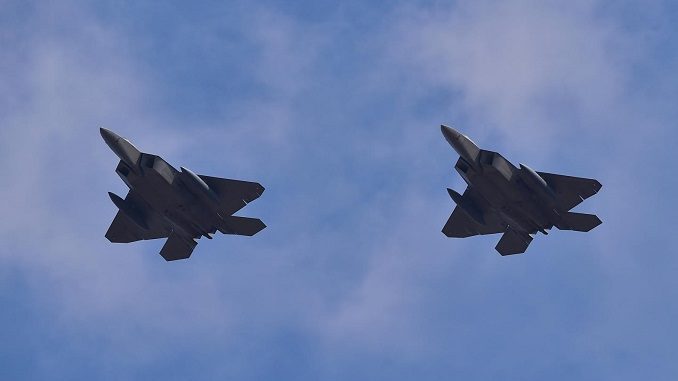
The North American Aerospace Defense Command (NORAD) came out with a statement in which they said that four F-22 stealth jets met with two Russian Tu-95 bombers on the Alaskan Air Defense Identification Zone which extends for somewhere around 200 miles off Alaska’s western coast on Tuesday.
The bombers then returned with two Su-35 fighter jets and were intercepted once again.
On this NORAD tweeted: “The Russian aircraft remained in international airspace and at no time entered U.S. or Canadian sovereign airspace. NORAD has intercepted an avg of approx. six to seven Russian sorties entering its ADIZ since Russia resumed long-range aviation patrols in 2007. This is the 4th and 5th intercepts this year and the 2nd day in a row that Russia has flown into the Alaskan ADIZ.’’
The bombers returned to the area with two Su-35 fighter jets and were again intercepted.
Fighter jets from the United States intercepted six Russian military planes in the ADIZ on Monday. Several hours later, the Tuesday incident occurred.
The Russian Defense Ministry came out with a Tuesday statement in which they said that their bombers were making scheduled sorties over neutral waters above the Chukchi, Bering and Okhotsk seas and off the western coast of Alaska and the northern coast of the Aleutian Islands.
The Russian bomber flights were restarted in 2007 as Moscow sought to boost the capabilities of its military. The U.S. armed forces view the sorties as part of Russia’s effort to prepare for a potential clash and an attempt to portray strength to adversaries, The Hill informs.
After the news about the incident came out on Tuesday, NORAD immediately wrote in a tweet:
“Our ability to deter and defeat threats to our citizens and vital infrastructure starts with detecting, tracking, and positively identifying aircraft in our airspace. We are on alert 24 hours a day, seven days a week, 365 days a year.’’

Be the first to comment